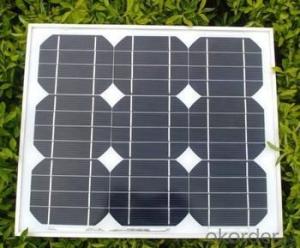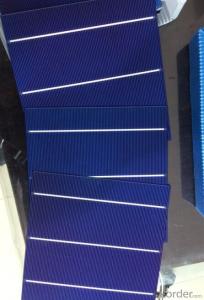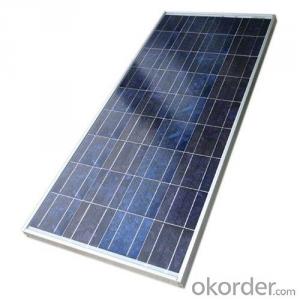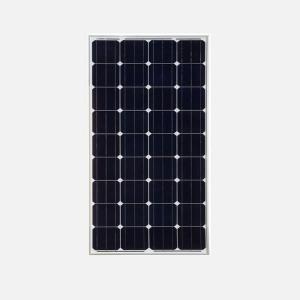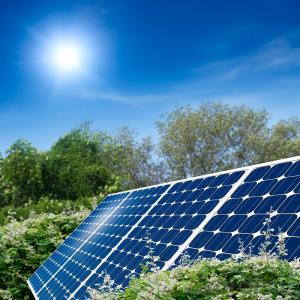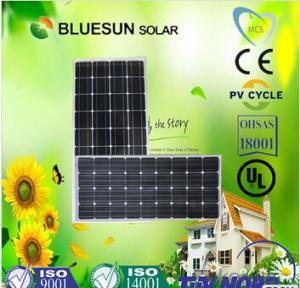Rooftop Solar Cells PB Free Aluminum Paste for Monocrystalline Silicon
- Loading Port:
- China Main Port
- Payment Terms:
- TT OR LC
- Min Order Qty:
- -
- Supply Capability:
- -
OKorder Service Pledge
OKorder Financial Service
You Might Also Like
Quick Details
| Model Number: |
Packaging & Delivery
| Packaging Detail: | 25kg/drum |
| Delivery Detail: | 5 days after payment arrived |
Specifications
AL8866 is a series of aluminum pastes developed for use as the back electrode on single or polycrystalline silicon solar cells.
Technical Data Sheet
Product description
AL8866 is a series of aluminum pastes developed for use as the back electrode on single or polycrystalline silicon solar cells. This low bow aluminum paste is specially designed to form p+ doped layer when fired on a p-doped silicon (<200 microns) photovoltaic devices. This paste has been optimized to eliminate Al bead formation during the firing process.
Typical properties | |
Solids (%) | ≥ 75% |
Viscosity (Pa.s) (NDJ-79, 25) | 23-35 |
Emulsion thickness | ≤ 25μm |
Screen mesh | 200-280 |
Dried thickness | 35±5μm |
Fired thickness | 25±5μm |
Resistivity (milliohms/square) | ≤ 30 |
Bowing | 125×125mm Monocrystalline silicon≤ 1mm (200 micron wafer) 125×125mm Monocrystalline silicon 1±0.25mm (180 micron wafer) |
All properties are target values and are not meant to represent product specifications.
- Q: How do solar cells contribute to reducing greenhouse gas emissions?
- Solar cells contribute to reducing greenhouse gas emissions by generating electricity from sunlight, a renewable and clean source of energy. By harnessing solar power, solar cells eliminate the need for conventional fossil fuel-based electricity generation methods, such as burning coal or natural gas, which release large amounts of greenhouse gases into the atmosphere. Therefore, the widespread adoption of solar cells helps decrease our dependence on fossil fuels, mitigates climate change, and contributes to a more sustainable future.
- Q: How do solar cells perform in regions with high levels of salt spray and corrosive environments?
- Solar cells generally do not perform well in regions with high levels of salt spray and corrosive environments. The salt particles can accumulate on the surface of the solar cells, leading to reduced efficiency and decreased performance. Additionally, the corrosive nature of the environment can cause damage to the materials and components of the solar cells, further impacting their functionality. To mitigate these issues, special protective coatings or materials can be used to enhance the durability and resistance of solar cells in such regions.
- Q: Can solar cells be used for powering telecommunications towers?
- Yes, solar cells can be used for powering telecommunications towers. Solar panels can generate electricity by converting sunlight into usable energy, which can then be used to power various devices and infrastructure, including telecommunications towers. This renewable energy source provides a sustainable and environmentally friendly solution for powering such towers, especially in remote or off-grid areas.
- Q: Can solar cells be used for powering remote weather monitoring stations?
- Yes, solar cells can be effectively used for powering remote weather monitoring stations. Solar cells have the capability to convert sunlight into electrical energy, making them an ideal and sustainable power source for remote locations. They can provide a reliable and continuous power supply to weather monitoring stations, allowing them to operate independently without the need for grid connections or frequent battery replacements. Additionally, solar cells are environmentally friendly and cost-effective in the long run, making them a popular choice for powering off-grid weather monitoring stations.
- Q: What is the impact of dust and dirt on solar cell performance?
- Dust and dirt can significantly impact the performance of solar cells. When dust and dirt accumulate on the surface of solar panels, they reduce the amount of sunlight that reaches the cells, resulting in a decrease in energy production. The presence of dust and dirt also creates a layer on the surface, which can cause hotspots and increase the temperature of the solar cells, further reducing their efficiency. Regular cleaning and maintenance are essential to maximize the performance and lifespan of solar cells.
- Q: How much energy can a solar cell produce?
- The amount of energy a solar cell can produce depends on various factors such as the size and efficiency of the cell, the intensity and duration of sunlight, and any potential shading or obstructions. On average, a standard solar cell can generate around 10-20% of the sunlight it receives into usable electricity. However, advancements in technology continue to improve the efficiency of solar cells, pushing the boundaries of energy production higher.
- Q: Is the solar cells factory in China good and trustworthy?
- We are a foreign company selling the solar cells all over the world, we actually set up our solar cell factory in China 5 years ago, and it turns out to be very good.
- Q: What is the future of solar cells?
- The future of solar cells is promising and bright. With advancements in technology and increasing efficiency, solar cells are becoming more affordable and accessible. The integration of solar power into everyday objects and the development of flexible and transparent solar cells are opening up new possibilities for renewable energy generation. Additionally, research is underway to improve the storage and conversion of solar energy, further enhancing the efficiency and effectiveness of solar cells. As the world continues to prioritize clean energy solutions, the future of solar cells looks to be a key component in achieving a sustainable and greener future.
- Q: Can solar cells be used in public transportation?
- Yes, solar cells can be used in public transportation. They can be integrated into various parts of vehicles, such as the roof or windows, to generate electricity and reduce the reliance on fossil fuels. This not only helps to reduce emissions and combat climate change but also provides a sustainable and cost-effective solution for powering public transportation.
- Q: How do solar cells work to become the solar energy?
- Solar Energy Materials & Solar Cells is intended as a vehicle for the dissemination of research results on materials science and technology related to photovoltaic, photothermal and photoelectrochemical solar energy conversion.
Send your message to us
Rooftop Solar Cells PB Free Aluminum Paste for Monocrystalline Silicon
- Loading Port:
- China Main Port
- Payment Terms:
- TT OR LC
- Min Order Qty:
- -
- Supply Capability:
- -
OKorder Service Pledge
OKorder Financial Service
Similar products
Hot products
Hot Searches
Related keywords
